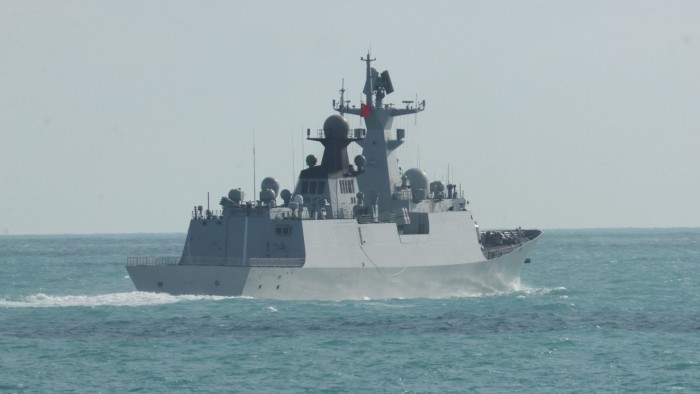Unlock the Editor’s Digest for free
Roula Khalaf, Editor of the FT, selects her favourite stories in this weekly newsletter.
The Australian navy is shadowing Chinese warships 150 nautical miles east of Sydney, the furthest China’s navy has sailed down the eastern Australian coast.
Two Australian ships are following a Chinese naval task group — comprising two warships and a supply vessel — that appeared off the north-east coast of Australia a week ago, according to people familiar with the situation.
One person said it was “unprecedented” for the Chinese navy to sail so far down Australia’s east coast and stressed that Beijing was normalising its projection of power beyond the first Pacific island chain, which stretches from Japan to Indonesia, and the second island chain, which runs from Japan through Guam to Micronesia.
“As the Chinese test their ability to project power further south, in addition to east and west, the question becomes how much they can hold at risk — how much they can signal to the Australians that they can threaten them,” said Charles Edel, an Australia expert at Washington-based think-tank CSIS.
The Australian defence ministry last week said the ships were sailing in international waters off the country’s north-east. The two warships include a frigate called the Hengyang and a cruiser, the Zunyi.
The Pentagon last year said the People’s Liberation Army Navy was building ships that extended its reach beyond east Asia. China insists it has the right to develop its military.
“While US foreign policy is in flux . . . the presence of the Chinese ships off Australia displays a consistency, with the Chinese navy continuing to extend the reach and intensity of its patrols in the region including off Australia and the south Pacific Islands,” said Richard McGregor at the Lowy Institute think-tank.
“That tells you about Chinese ambitions in the Pacific where it is competing head-on for influence with Australia and, to a lesser extent, the US.”
Chinese navy ships visited Sydney in 2019 but that visit, unlike the current deployment, was co-ordinated with the Australian government.
The incident came as admiral Samuel Paparo, the head of US Indo-Pacific Command, was visiting Australia, where he met defence minister Richard Marles and foreign minister Penny Wong in addition to meeting vice-admiral Justin Jones, the chief of joint operations.
The Australian defence department and Chinese defence ministry did not immediately respond to requests for comment.
Euan Graham, a defence expert at the ASPI think-tank in Canberra, said the PLA was expressing power in the Pacific more frequently. He added that China had a history of unsafe responses to legal Australian maritime activity. Beijing objects when the US and Australian navies sail through international waters in the Taiwan Strait.
“They want to have their cake and eat it,” said Graham. “It’s a clear double standard.”
Marles, who also serves as deputy prime minister, said last week that the PLA Air Force had fired flares within 30 metres of an Australian P-8 aircraft, in an “unsafe” incident in international waters in the South China Sea.
Last week, Marles ordered the Australian navy and air force to keep a “close eye” on the Chinese naval task group. Beijing responded by accusing Australia of deliberately infringing on its rights in the South China Sea.
Additional reporting by Kathrin Hille in Taipei
Read the full article here




